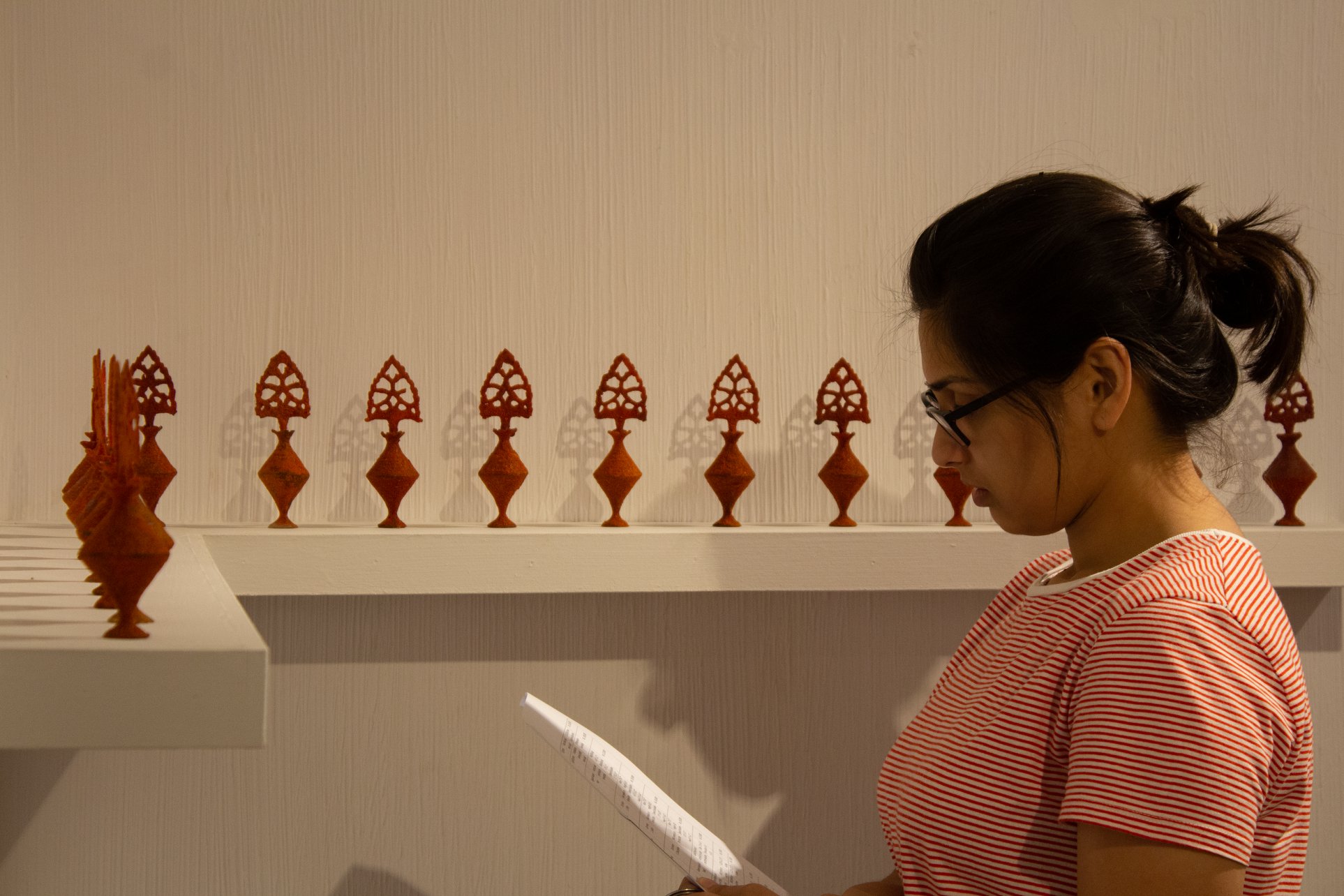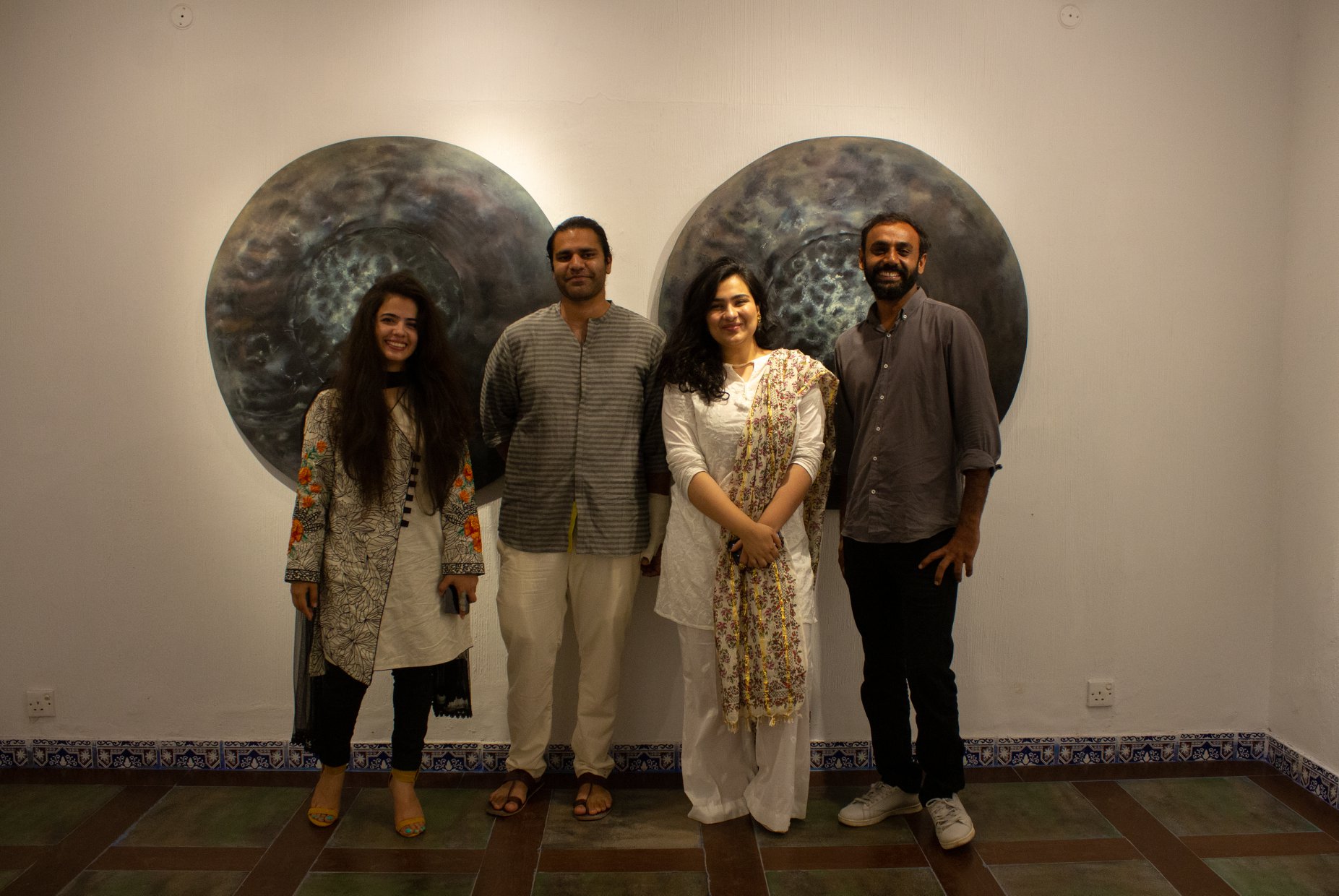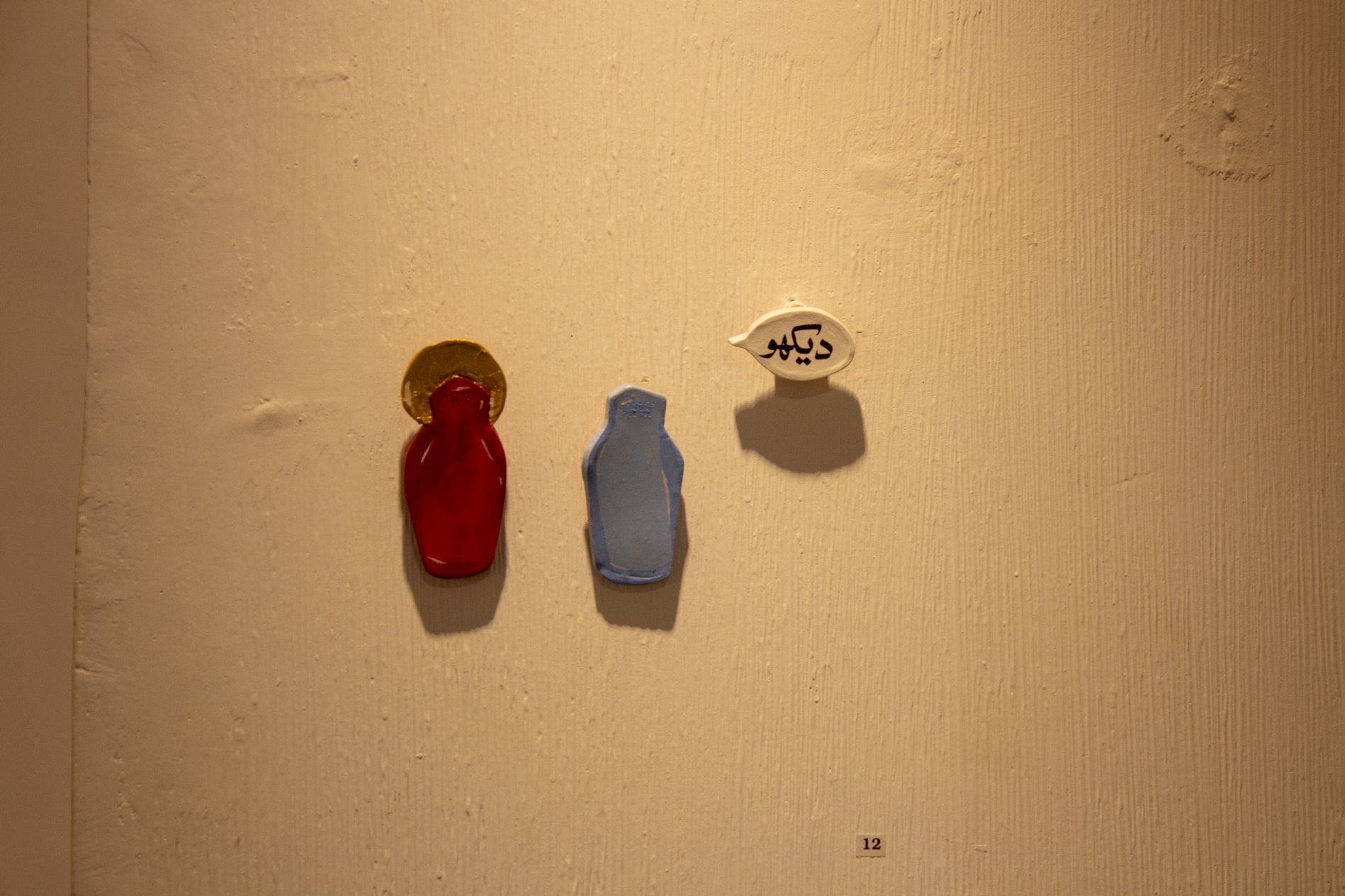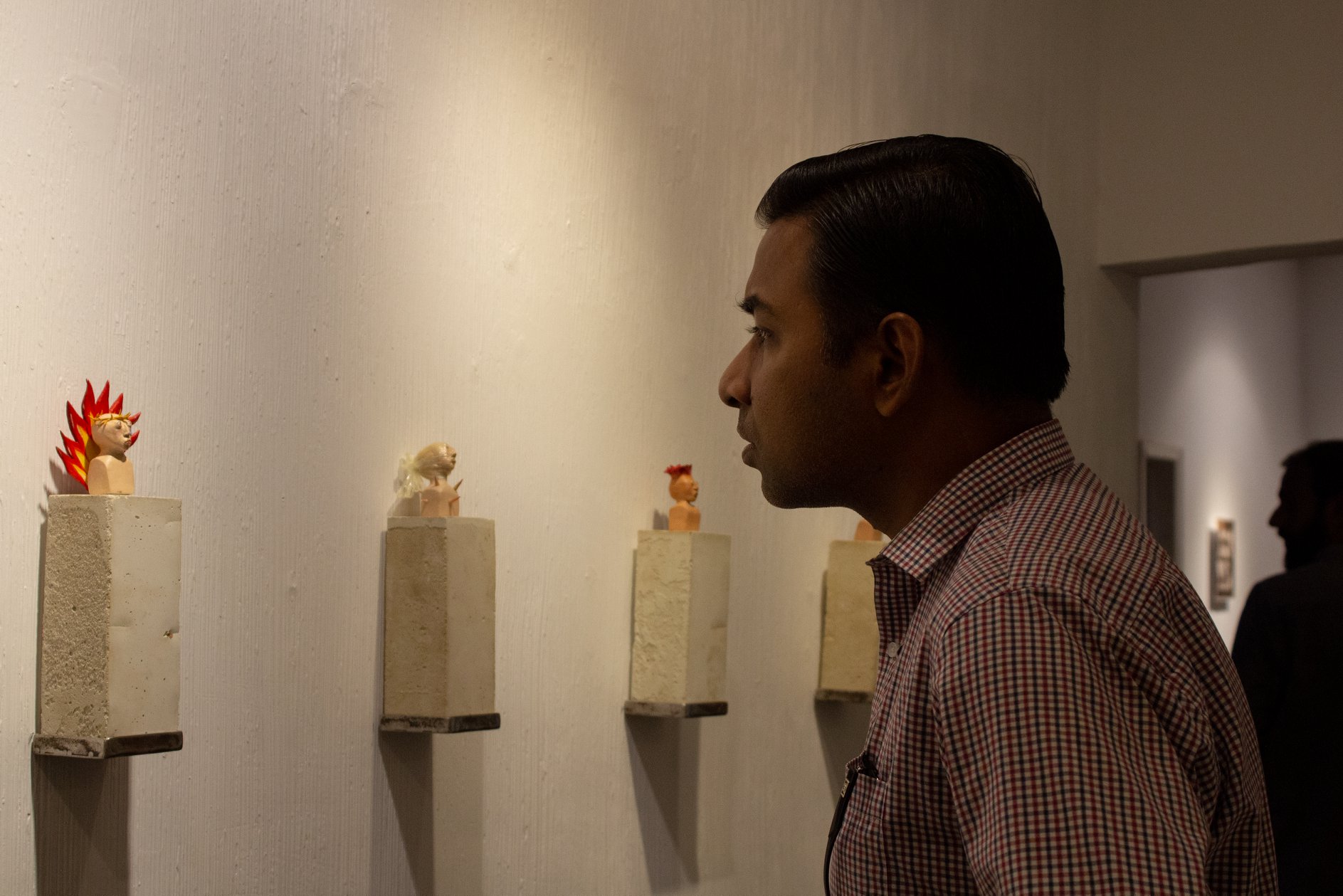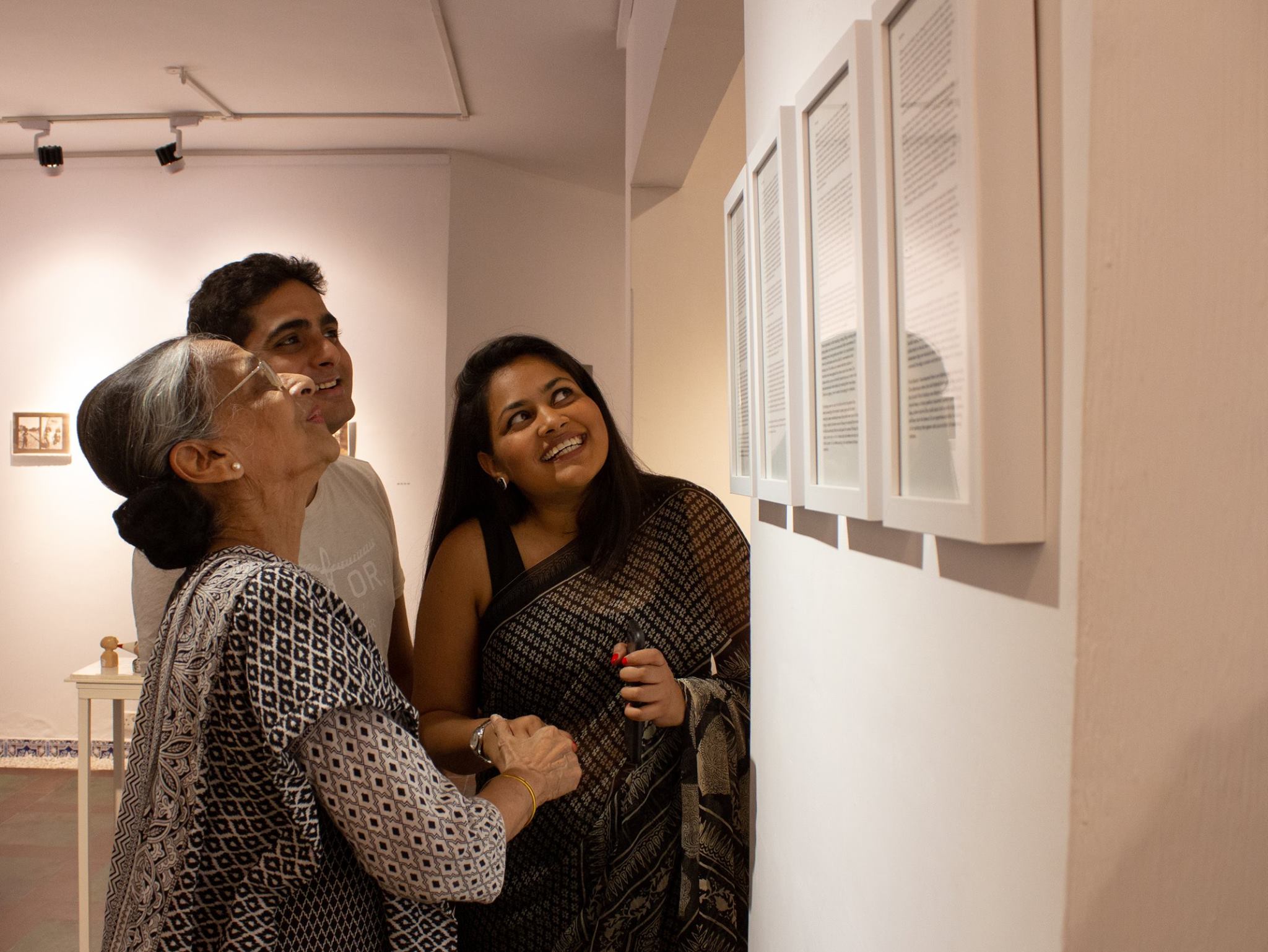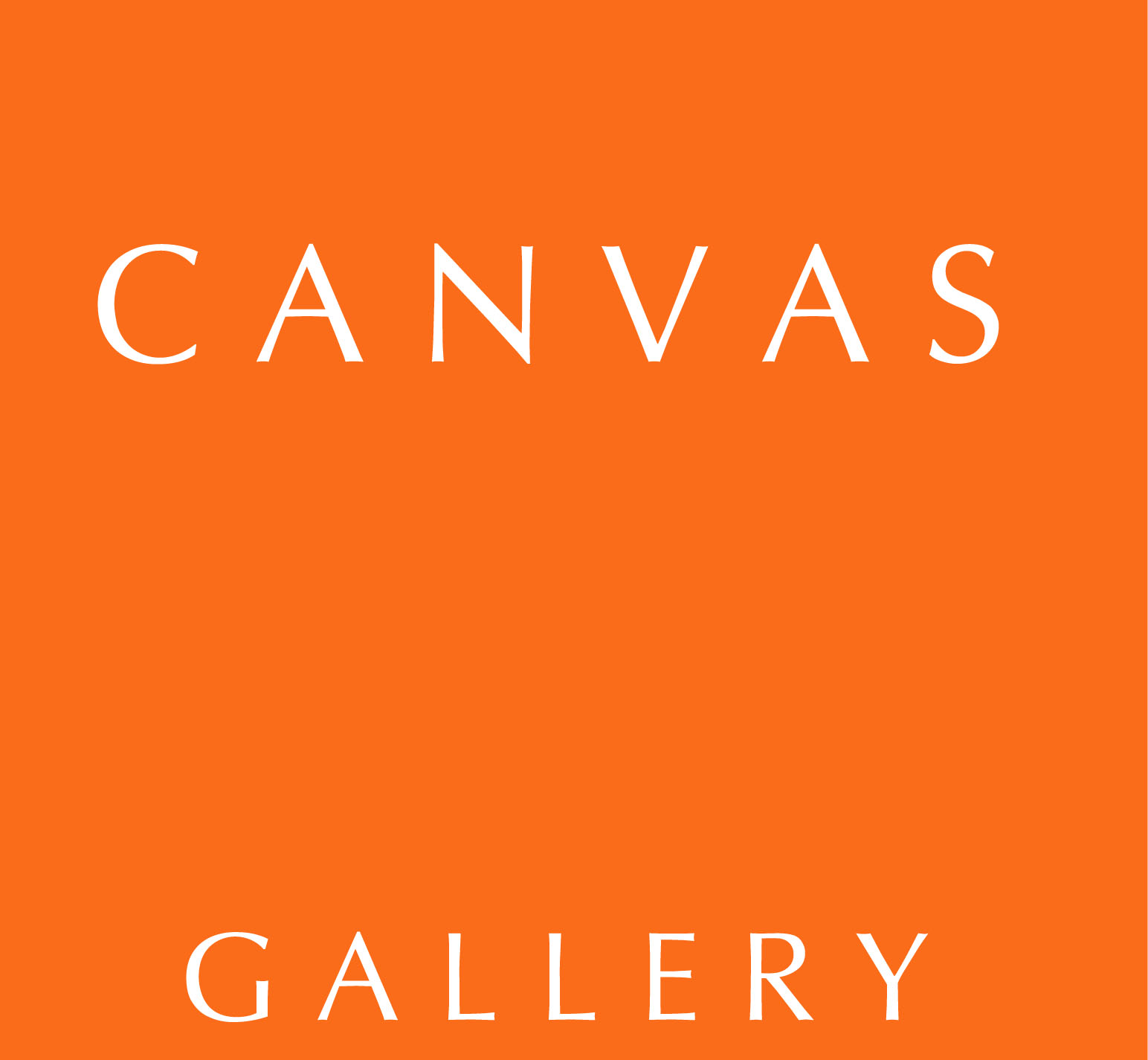Diversity | Adversity
Taaza Tareen 11
March 12 – April 25, 2019
with Bushra Khalid, Hamid Ali Hanbhi, Jahanzeb Haroon & Noormah Jamal
Taaza Tareen Residencies have supported recent graduates from Pakistani art institutes at formative stages of their professions. Marking 11 cycles of successful Taaza Tareen Residencies, the 2019 Taaza Tareen artists in residence; Bushra Khalid, Noormah Jamal, Jahanzeb Haroon, Hamid Ali Hanbhi and Natasha Japanwala (Writer in Residence) from Sialkot, Lahore, Peshawar and Karachi respond to the theme Diversity-Adversity. The city of Karachi, a giant megapolis of 20 million people, is a microcosm of the country itself – in its diversity and conflicts, its trials and its joys. The exhibition reflects the resident artists’ responses to the dialectics of everyday urbanism. During the residency program, the artists and the writers are given the opportunity to develop work through research and investigation.
Bushra Khalid
Bushra Khalid is a Lahore based visual artist with a M.F. A (Visual Arts) degree from College of Art and Design, Punjab University in 2017. Although trained as a painter, she also works with sculpture and installation in her practice. During her M.F.A., she joined Artists’ Practice Program held in Shakir Ali Museum. She has participated in international and national group shows and was part of Karbath 01 artist’s residency in 2018. She is a recipient of Arjumand Merit Prize 2017. Currently she teaches at Government College Women University, Sialkot.
Artist statement:
Diverse occurrences directly or indirectly, distinctly or inconspicuously keep on forming and deforming the society. These manifestations are reflected in my work through the installation and paintings using a degh (a large cauldron-like cooking pot used in local restaurants to cook food) as a metaphor. The sound of beating, burning, scraping and cleaning the degh, and its texture are the tools to represent different anthropological matters. Varied occurrences have an analogy to the processes of degh which together create a symphony – A symphony of society.
The texture of the degh which comes from hammering on it, giving the illusion of finger impressions as if a lot of people are documenting or contributing in the construction of a form. Also, the shape of the degh gives the impact of a woman’s torso ready to give birth. The layering of soot densities after degh’s each usage – these are the reasons which made me feel related with this medium that can communicate diverse messages on many levels.
Hamid Ali Hanbhi
Hamid Ali Hanbhi is a visual artist who currently resides in Lahore, Pakistan. Originally from Jacobabad, Sindh, he graduated with a distinction from the National College of Arts in 2016. He started his career by painting billboards/truck art at ideal arts in Jacobabad. Hanbhi is a multidisciplinary artist who has had numerous exhibitions since graduating. Most notable being at Canvas Gallery; Karachi, Taseer Art Gallery; Lahore, O Art Space; Lahore, Karachi Biennale 2017 and a project with Imago Mundi Publication. He also conducted workshops for the Lahore Biennale. Hanbhi currently works at the R.M Naeem studio as a teacher.
Artist Statement:
As a young boy I worked at a paint shop in Sindh where I made paintings and religious iconography for diverse communities and experienced that appearances may not tell the identity.
Similarly, at times, visual appearances, no matter what their form and state tells us, may actually be in complete negation of our assumption. My work stems from this act of transformation. By changing the function/materials of an object while staying true to its form, I wanted to incorporate the idea of diversity and adversity in such a way that while these forms are recognizable, the materials used to construct them are alien to their purpose.
Jahanzeb Haroon
Jahanzeb Haroon is a visual artist based in Lahore. Haroon is a 2018 graduate of National College of Arts, Lahore with a major in painting. Haroon’s work has been displayed nationally and internationally. He was part of the Imago Mundi art project for Pakistan. In January 2017, Haroon was one of the 3 students selected from a pool of 100 to spend a term in Siena, Italy at the Siena Art Institute’s Study Abroad Program, where he also exhibited his work. In 2018, Haroon was a resident artist at the Pioneer Cement residency, Khushab, held in collaboration with Canvas Gallery, Karachi. Haroon contributes to ArtNow as a photographer and writer. He currently teaches at National College of Arts, Lahore as a Teaching Associate.
Artist statement:
Playing the role of a visual anthropologist, carefully situating myself in particular spaces with the stance of a distant observer, I try to form connections with people and situations, with a particular focus on the decisive moment in which narratives form and deform.
The current project is a brief stint into the exploration of the socio-economic polarities which exist in our society. The body of work looks at the optics of this schism, with a focus on children and how the divide affects their surroundings dictating their public presence.
Children, have a greater ability to exist both within and outside of social boundaries compared to adults, who adhere to socio and psychological, boundaries more resolutely – Children inhabit a fantasy land of their own making, irrespective of their surroundings. The body of work in question explores this characteristic of their age and how it psychologically transforms with time, using the temporal medium of photography.
Noormah Jamal
Noormah Jamal is a Lahore/Peshawar based Visual Artist. She graduated with honors from the National College of Arts in 2016, majoring in Mughal miniature painting and minoring in printmaking. Having grown up in many cities in Pakistan, she is a Pukhtoon who is originally from FATA (Federally administered Tribal areas). Her experiences of different cities are reflected in her practice. Since graduating, she has had numerous shows in Pakistan, Dubai, China, and Switzerland. Some of the shows include You and I at T2F Karachi; Empirical Empire at Full circle Gallery, Karachi; Tarhun The Beautiful the Bizarre at O Art Space, Lahore; Teller of Tales at Taseer Art Gallery, Lahore; Ustaad Shahgird exhibited at PNCA Islamabad and XIANG Polytechnic University, China and Space in Time at Reitberg Museum, Switzerland. Her work has also appeared in various Magazines and Publications.
Artist Statement:
Karachi being a melting pot of people and experiences, I started off with conversing with the people of the city. I found that though its people are diverse in their economic, geographic, ethnic and religious backgrounds, many share the adversities of living in a mega city, which in itself becomes a unifying factor. Taking on this theme, I chose to work outside of my normal 2D comfort zone and produce gritty 3D sculptural works to better reflect the mammoth city. Some of this is specific to certain communities/people while other work reflects shared experiences. There is a certain kind of acceptance of the anomalies that exist with the city. In spite of all the hardships of life, its people are resilient and the vibrancy never ends.
Natasha Japanwala
Natasha Japanwala is a writer and teacher, based in Karachi. Her features, essays and reviews have appeared in publications at home and abroad, and she is passionate about developing and implementing bespoke arts programming in schools in low-income communities. She holds a degree in English literature from Princeton University, and will begin a degree in international education policy at the Harvard Graduate School of Education this fall.
Writings
Bushra
Cities are not static, even though the structures that crowd them often stand still. The life within and outside these walls is what makes a metropolis breathe, and every now and again we stumble upon something small, something that is not unique, but which captures the otherwise impossible-to-pin-down energy that keeps a city pulsing. A daig, used to cook meals for large gatherings, was unremarkable to me until Bushra traced the marks around its swollen, silver belly, pointing out how they looked like thumbprints, left behind by countless hands.
Long before she found herself captured by the sound of a daig being moulded in Bolton Market, she tried to grow roses and gladiolas in an acrylic box, where they withered and crisped. The daig, also an enclosed space, had different possibilities for her: unlike a box (but like a city) it wasn’t static. Its texture bore its timeline, evidence of its countless cycles of formation and deformation, witnessed as beating, shaping, fixing that morning in Bolton. She was attracted to its multiplicity of sound — the fire hissing from beneath, the spoon clattering within — and began to imagine these sounds, and the footsteps and chatter enveloping them, spilling around a gallery.
What captivated me about Bushra’s work was the intimacy of her process: bringing the daig back to the studio, so that she could record it in silence. Painting in her bedroom instead of in her studio, because she doesn’t like the separation otherwise, and prefers to paint before sleeping. Alongside her audio installation, she has painted what appear to me like two massive globes. These are the surfaces of the daig as she imagines them, the silver appearing blue as it reflects the light. There’s a movement in her work from experience to imagination: from seeing and capturing a moment, to recreating how it can be felt once it has lived inside your mind for a while.
The city moves from intangibility to intimacy — and perhaps this is appropriate. The ideal daig, the ideal city, perhaps these can only exist in the mind. I think of the millions of souls, the hundreds of communities, that make up the city: how their footfall marks every street, how their breath congregates collectively in the air, how despite their overwhelming human similarities they are viciously divided still. When emptied and removed, the daig is circular and yet hollow; when hit, it haunts.
From Bushra I have learned there are infinite ways to see a city. One afternoon, when she had finished her work at her studio at the Karachi Parsi Institute, we climbed up to the roof. The city beyond was a cricket pavilion; unpainted cement and washing lines, a silver skyline. You could soak it all in with a single glance, and hear only the breeze. It’s an experience similar to looking at her paintings: they appear calm, but are built of maddening vastness.
Hamid
Objects, like motifs in novels, recur throughout our life with a poetry that astounds. Back when he painted cinema boards, billboards, trucks, Hamid would send for tea that arrived in palm-sized cups, accompanied by a small kettle with a swan-like neck and a hinged lid that snapped open. These cups and kettles are used and discarded all over the city, but for Hamid they beckon a bygone era in his own life, and are loaded with nostalgia. Maybe that’s why he searched teashops, hotels, and restaurants for them, and brought them back to the studio where he cut them into flowers.
It’s an image that conveys both longing and loss: flowers are given to lovers, but also heaped on graves, and so represent joy and sorrow in equal measure. If the dishes (like the expanse of boards or the sides of trucks) were painted over, they would have been disguised, uplifted. But cutting away negative space is a rebirth: the dishes take on a glow from the effect, a kaleidoscopic sheen. Cinemas, billboards, and trucks are all urban facades — surfaces that play a fundamental role in keeping the city functioning. But dishes rendered into flowers are no longer dishes. Hamid has reimagined other objects too: fresh red chilies cast with surme, or kohl that is used to line eyes; and surme daanis, the bottles in which kohl is filled, cast with chilies. The functions of both these objects, like the function of the dishes, are made void. They are completely reimagined and can be nothing anymore, other than art.
These objects carry stories within them even once they are frozen by Hamid’s hand. In so many ways, he makes the city come alive in miniature: a garden of dish-flowers; a shop full of surme-chilies; a bureau lined with chili-surme daanis. There is something grave-like about his work and also something paradise-like: his objects are ghosts of their former selves, but are released into what feels like an otherworld, in their new bodies.
There’s physicality to this recasting: cutting, filling, working quickly, getting plaster and resin and surme and chilies everywhere. It’s exhausting work, both gentle and violent in its machinations, driven by both desire and force. But it’s overwhelmed with intimacy, too. The dishes are covered with the touches of hundreds who have sipped from them, eaten from them. The chilies and the surme are literally poured into each other’s skin: they become each other, while still retaining their own shape.
There’s an urgency, Hamid seems to be saying, for symbiosis.
I’m thinking now of a story he told me from his painter days, when he would go into temples to paint gods and his family would get upset, would say he was doing sinful work. And he kept trying to explain the sheer sense of beauty he derived from what he did, his conviction that he could paint for anyone. Perhaps his recast objects are a cry for a recast city: one where we step out of the borders of our selves, and into the experiences of those around us.
Noormah
The figures are meant to unsettle you — and their size, the way you don’t anticipate their expressions, makes them all the more haunting. They carry fiberglass loudspeakers but have their backs plastered with political posters: they are speaking, but their voices are not their own. They are wrapped in plastic — their expressions fundamentally deformed: they can’t speak, but are staked on spikes. Unity. Faith. Discipline.
When you talk to Noormah about her art, you are also talking to her about politics. She is tethered to her hometown, Peshawar, and the stories that surround it — stories that are repeatedly ignored and silenced, and routinely forgotten. Her mother, who runs a hospital in Peshawar, once had a woman come to her who had been forced to flee Swat. In a hurry, she grabbed the bassinet but not the baby. It’s a story you can’t stop thinking about once you have heard it, and one Noormah carries with her: from Peshawar to Islamabad to Lahore, split between the cities that have shaped her, belonging to them in different ways, asking to be heard in them all.
Her figures embody this asking: they are both her voice, and the voices she carries within her. The voices she has heard, the voices she has seen, and the voices she knows. None of these voices are allowed to speak, but with her hands, she gives a form to the stories that are itching to be told. They develop a presence and an expression.
While waiting for them to burn in the kiln, temporarily free from thinking about giving shape to the weight of what they represented, she awakened to what surrounded her. She started stopping people in public, asking them what Karachi — a relatively new city to her — meant to them. “It will eat you up.” “It’s like a Formula 1 race.” “It should be a province in itself.” “I’ve come here to make something of myself.”
She noticed that they came from everywhere, all over the country, snapped out of their communities while commuting, while working, while living. They mingled with each other, and so learned about each other. Karachi, in all its congested glory, thrusts people together, creating infinite possibilities for empathy. When public information is censored, and speaking out is at constant risk of persecution, perhaps the only way to bring the truth to light is through forced intimacy: conversations that bloom accidentally, while gulping down tea, or riding on the tops of buses. This is where I’m from, and this is what I have seen.
Noormah’s figures stare back at you, and their asymmetrical expressions are meant to unsettle. It’s because they are asking you to stop, and to listen.
Jahanzeb
The slowness of salt printing runs counter to the quickness demanded to seize a moment on film — each shot is considered, each negative developed and scanned, then contact-printed on paper treated with a solution of silver and salt. If exposed too long, it is ruined. It’s a process that requires handling and watching, suffused with a tangibility that is denied when one is behind the camera.
Childhood is not a slow era: it is as ephemeral, especially once remembered, as a single image. But the way Jahanzeb treats the images he has gathered slows them down for us. Following the train tracks, weaving in and out of katchi abadis, he is a voyeur no different from passengers glancing out the window of a train, snatching what they are passing. He also wandered around apartment complexes and bungalows in neighborhoods bordering the katchi abadis, but too often got reprimanded by security guards. Returning to the Clifton apartment in which he grew up, he had trouble getting inside and felt barricaded, grilled, oppressed. In the katchi abadis, meant for communities more sidelined from the built and developed parts of the city than he will ever be, he ironically felt freer.
A set of photographs meant to capture the confluence, conversation, and crossfire across class divides as they manifest in our urbanity evolved into a set of photographs in search of childhood — in every image Jahanzeb has captured, he is looking for his own lost self, all in the corners and alleys of a city he no longer knows. Can an idyllic childhood exist in this city? You are either filed away behind closed doors, staring at screens in dim rooms, forbidden from going outside; or you are outside, laughing as you play in the sun-dappled streets, inches away from your eventual, inevitable resignation to a life that will be everything but easy.
There comes a point when photographs can no longer relay what Jahanzeb is beginning to feel, a restless emotion impossible to label at first. That’s when the canvas comes out, drenched with chemicals and left to dry in the dark. It is taken up to the roof, loaded with broken toys found while photo-walking, plants growing in the colonies, or plastic bags blooming on the side of the streets. It is covered with these, with silhouettes, and exposed, like the negatives, to the sun. The spontaneity of the making is reminiscent of play. What results are not moments that can be traced, faces that can be identified, or buildings that can be recognized — but something fantastical, the imagination gone wild. Even then, look closer and you’ll see the roots of reality: the tiny presence of insects, the outline of a lizard.
The canvas is drying on a line, in a studio crowded with glass and paper and flooded with water. Its surface is electric blue stirred through with something at once more sinister and more calming: jade, maybe. Together, the colours create a deep aqua. “I think I’ll call this Between the Devil and the Deep Blue Sea,” Jahanzeb says. “It goes well with the choices the kids will have to face.”







